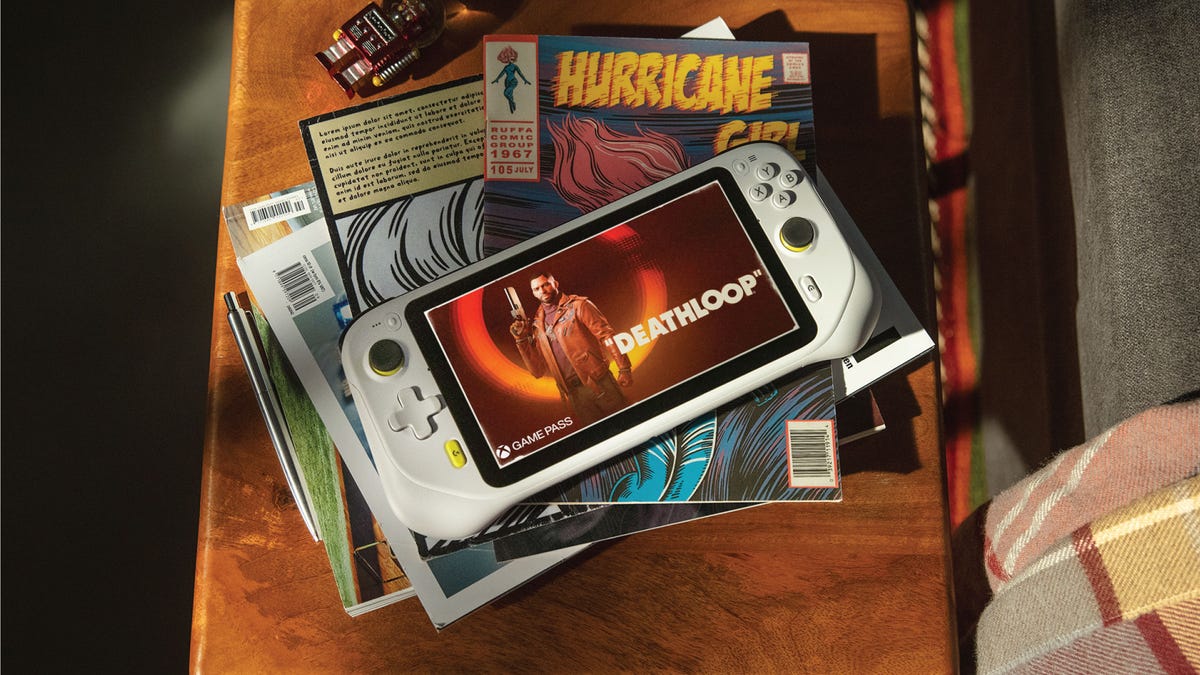 Why You Can Trust CNET
Why You Can Trust CNET Logitech G Cloud Wants to Be Your Steam Deck, but for Cloud Gaming Services
The Nintendo Switch-like Logitech G Cloud Gaming Handheld, co-developed with Nvidia and Microsoft, launches with Xbox Cloud Gaming and GeForce Now support.

Logitech's new G Cloud Gaming Handheld, a sort of Nintendo Switch, Steam Deck-like console designed with Microsoft and Nvidia, launched with little fanfare, going from partnership announcement to preorder on Wednesday. The device is specifically intended for playing from cloud-based gaming services, notably (and unsurprisingly) Xbox Cloud Gaming and GeForce Now, as well as using local game-slingers like Xbox Remote Play and Steam Link. And Google Stadia lives in Logitech's FAQ, but nowhere else, which also says you can play on Amazon Luna via Chrome.
Amazon lists it as available on Oct. 18 -- Logitech simply says October -- and while it will normally be priced at $350, you can preorder it at a sale price of $300. Subscriptions to the cloud services are not included.
The screen's pretty basic: a 1080p, 7-inch IPS display with a 60Hz refresh rate and 450 nits brightness. It runs on a Qualcomm Snapdragon 720G with 4GB memory -- Android inside. It has stereo speakers with an amp, a stereo noise-canceling mic and both 3.5mm and USB-C audio output (no video), as well as Bluetooth 5.1. You can connect via Wi-Fi 5 only -- no cell support, which is disappointing.
Built-in storage is 64GB, but it's not clear what can get installed or saved locally; it does have a slot for a microSD/TF card. It also professes "linear haptics" for the controls, but it's not clear what that means. The company promises up to 12-and-a-half hours of play time. It weighs about a pound (463 grams), and its dimensions lie somewhere between the Steam Deck and Nintendo Switch.
I've got mixed feelings about this. Attaching any type of controller to a phone is still a bit of a hassle, and even big-screen phones feel a little small because they're long and narrow rather than 16:9. But at its price it competes with the Switch for your money even though they're very different devices. And it's specced for least-common-denominator cloud gaming, not something like GeForce Now's RTX 3080 high-refresh 1440p. Plus, we've gotten used to OLED screens on many devices. Nor is there any mention of a charging dock.
This will take some thought. And lots of hands-on testing.

